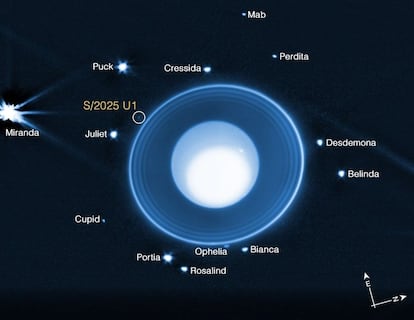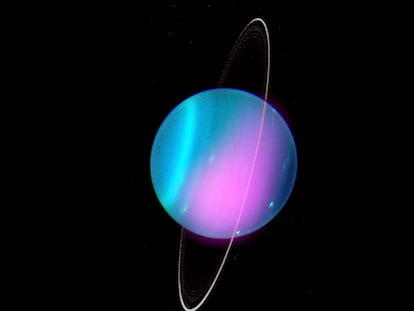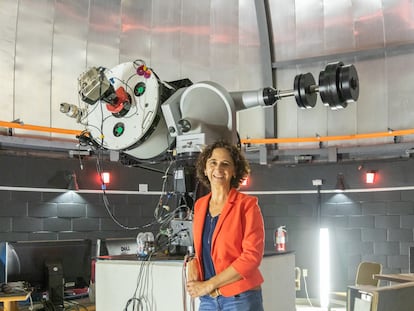A new moon of Uranus has been discovered, thanks to the James Webb Space Telescope.


Uranus is the planet with the most moons in the Solar System, and the James Webb Space Telescope has discovered a new one, just ten kilometers in diameter, bringing the total number of its satellites to 29.
For now, the new moon has been designated S/2025 U1 and its name must be approved by the International Astronomical Union (IAU) , the main authority for naming and officially designating astronomical objects.
“It’s a small moon, but a significant discovery, something that even NASA’s Voyager 2 spacecraft missed during its flyby nearly 40 years ago,” said Maryame El Moutamid of the Southwest Research Institute (USA), who led the detection with Webb observations.
Since the moon is estimated to be only 10 kilometers in diameter, its tiny size likely made it invisible to Voyager 2 and other telescopes, NASA reported. And because of this, there is also hope of finding more moons around Uranus.
No other planet in the solar system has as many small inner moons as Uranus, and their complex interrelationships with the rings “point to a chaotic history that blurs the line between a ring system and a moon system,” said Matthew Tiscareno of the SETI Institute (USA).
The newly discovered star is 56,000 kilometers from the center of Uranus, and its nearly circular orbit “suggests it may have formed near its current location.”
It is the fourteenth and smallest of the complex system of inner moons, orbiting the interior of the larger ones, with names such as Miranda, Ariel, Umbriel, Titania, and Oberon, all named after characters by William Shakespeare and Alexander Pope.
This discovery underscores, El Moutadim said, how modern astronomy “continues to build on the legacy of missions like Voyager 2 , which flew by Uranus on January 24, 1986, and gave humanity its first close-up view of this mysterious world.”
Now, nearly four decades later, Webb is providing “a new perspective on the outer solar system” and “further expanding that frontier,” he explains.
Do you want to add another user to your subscription?
If you continue reading on this device, it will not be possible to read it on the other device.
ArrowIf you want to share your account, upgrade to Premium, so you can add another user. Each user will log in with their own email address, allowing you to personalize your experience with EL PAÍS.
Do you have a business subscription? Click here to purchase more accounts.
If you don't know who's using your account, we recommend changing your password here.
If you decide to continue sharing your account, this message will be displayed indefinitely on your device and the device of the other person using your account, affecting your reading experience. You can view the terms and conditions of the digital subscription here.
EL PAÍS





